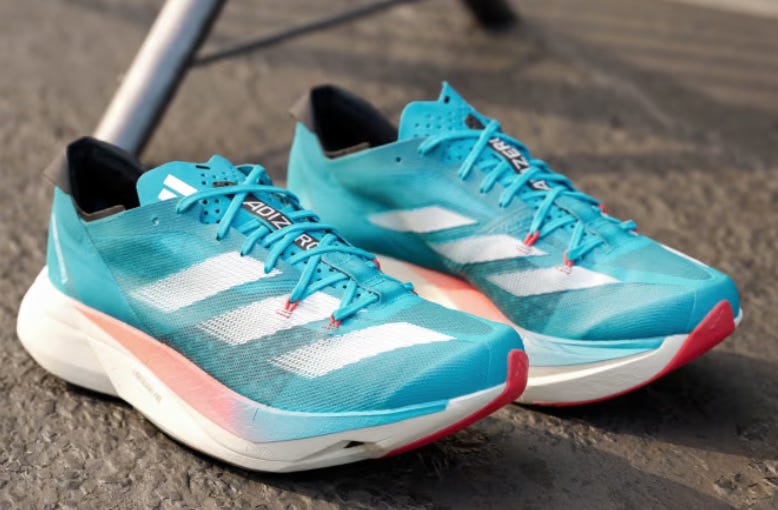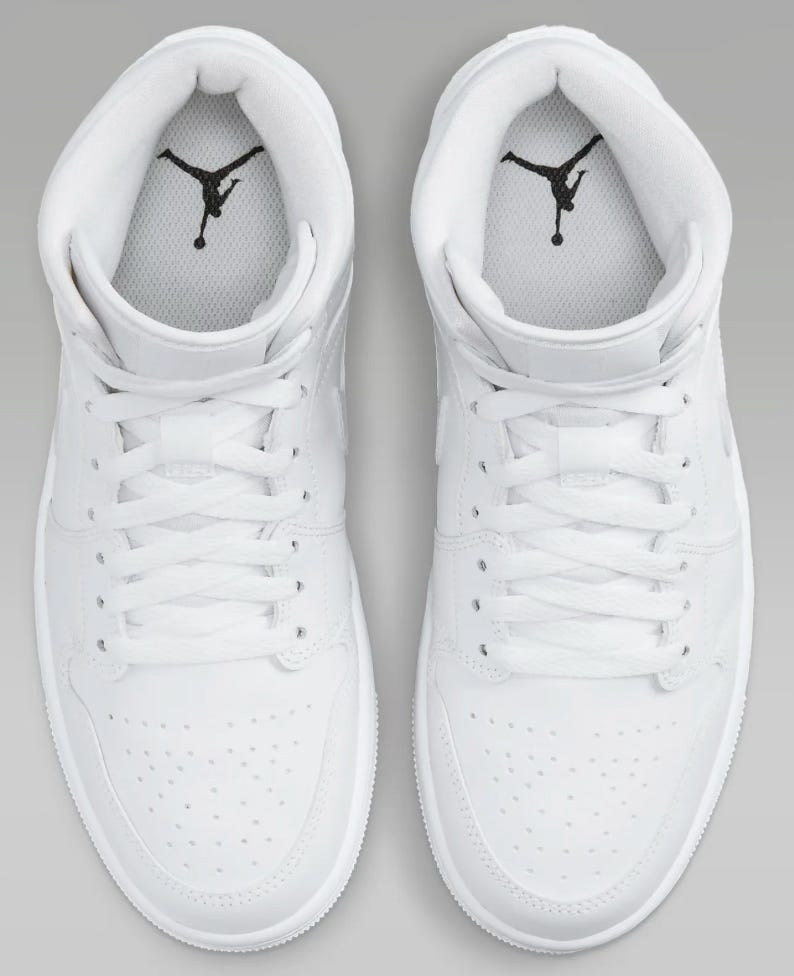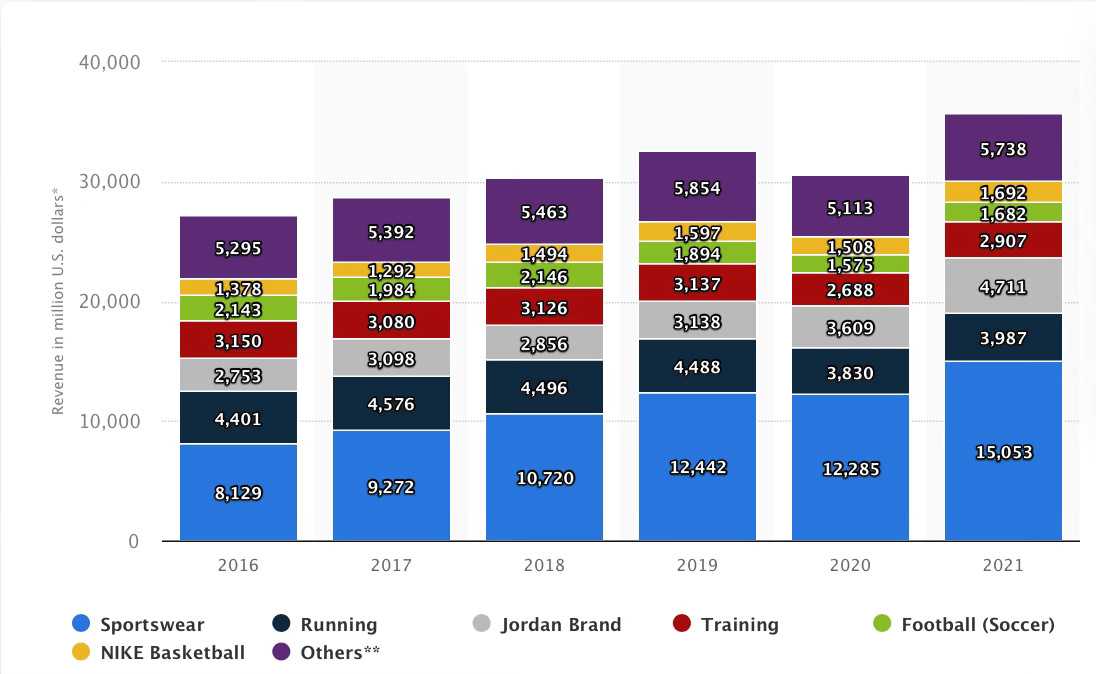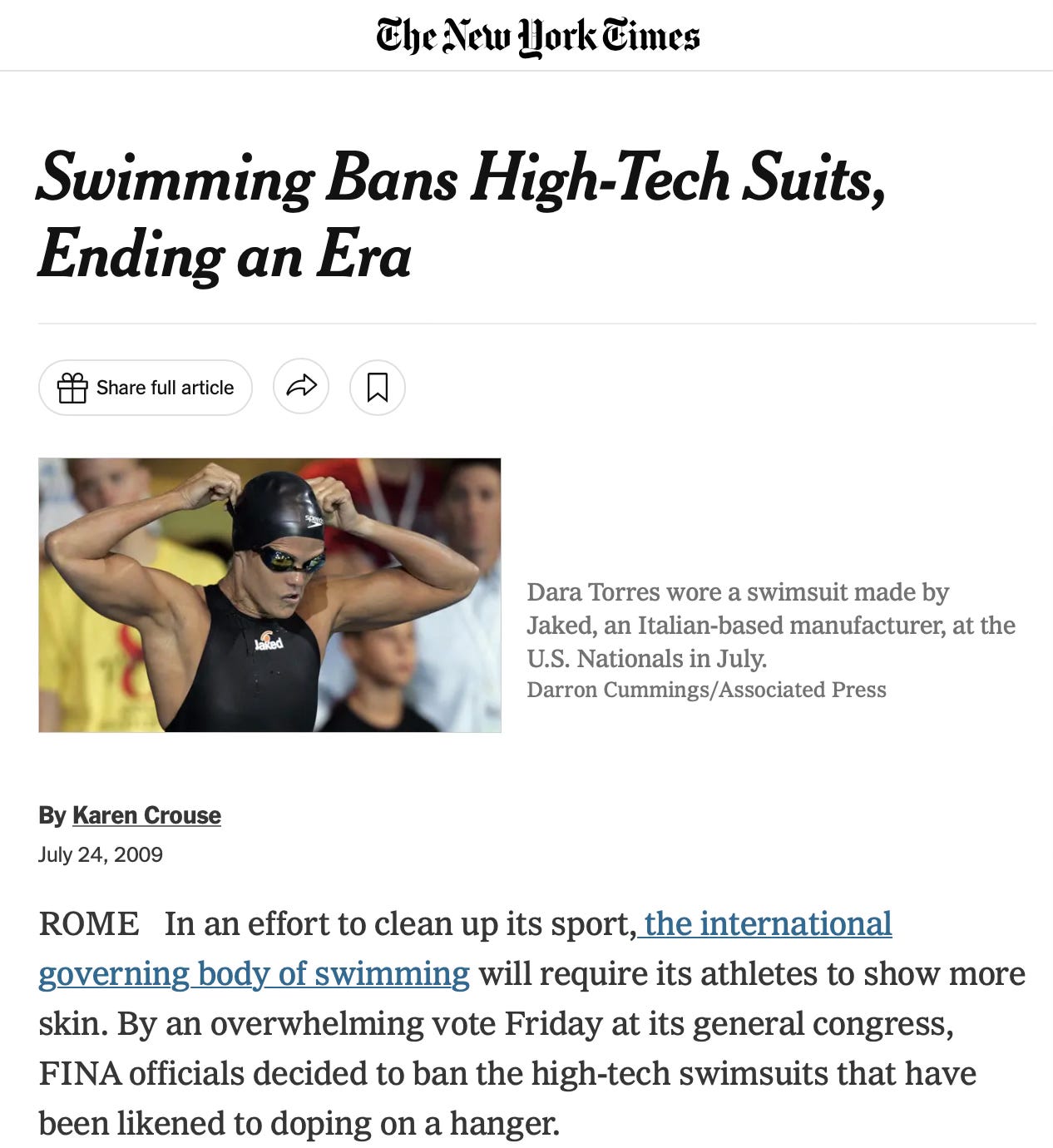2:11:53 That’s what the clock read when Tigst Assefa ran past the finish line of the Berlin Marathon on 24th September, 2023. In the marathon world, it was an unprecedented milestone. Tigst had done the impossible. Not only did she break the world record in women’s marathon by a stretch, she also crossed the 2:12 barrier in the women's marathon. After her impressive feat, the world record standings look like this.
However, the buzz around her achievement soon shifted to her footwear – a pair of dazzling white Adidas Adizero Adios Pro Evo 1. At 138 grams, these ‘super shoes’ were extremely light. To give you a sense of how light they are, remember the Nike Vapor Fly shoes that were almost banned from the Tokyo Olympics? Yeah, they weighed around 195 grams. And they significantly reduced the number of Adidas-sponsored marathon winners, as per a Wall Street Journal analysis. Just imagine what this new pair of Adidas is gonna do.
These shoes are extremely complex. Adidas invented new lightweight materials like a rubber for the shoe’s outsole that saved weight without sacrificing grip. They moved the rocker—the shoe’s pivot point—further backward after analysis suggested it would improve running economy. The sole itself is made of a new type of foam that, combined with the carbon-fiber forks that Adidas uses instead of plates, provides the bounce that helps the wearer go faster.
Ultimately, the goal for all these ‘super shoes’ is the same- break the 2 hour mark in a marathon. Doing so would mark a new era in human capability and driving that era would be one of these two shoes. For many though, this obsession with running is a bit confusing. Why focus on running? There are much more popular sports with similar records left to be broken? Fair enough. So let’s break down the question of…
Why running?
The two giants of sportswear have a long association with running. For Adidas, the association predates the formation of the company. Its founder used to run the company with his brother and they had persuaded Jesse Owens to use their shoes for the 1936 summer Olympics. Owens went on to create history in the event, winning four gold medals while wearing shoes made by the Adidas founder. Nike was made by a track athlete and his coach. Their first shoe was made specifically for running athletes. Naturally, both of them have a soft corner for running.
But what does emotion have to do with the cold hearted nature of running a multi-billion $ company? Nothing. Both Adidas and Nike mint a large chunk of their revenue from assets that have nothing to do with running. Adidas today is known for their celebrity collaboration on sneakers. Think of Ye and Yeezy (although that collab is now over), Pharrell Wiliams, Stan Smith, Stella McCartney. For Nike, the moolah is in Jordans, LeBron and Air Force 1s.
However, both companies still insist on innovating in the running space. There are several reasons behind it. Almost all of them are conjectures at this point but still… they hold some merit in my opinion. First is a simple fact of business. Running shoes as a category bring in a lot of money. Yes, they’re not the cash cows for both of these companies but they still manage to attract a fairly decent and steady pool of cash. Look at the chart down below. It categorises Nike’s revenue from each product category in footwear. Notice the consistency in performance of the running shoes. Barring 2021, they were the second biggest category across years. So it makes sense for Nike to innovate further in this space. I couldn’t find the exact numbers for Adidas but it’s safe to assume that they must have somewhat similar figures too.
Second is the nature of running itself. Running is a primal sport. Everyone does it, has done it and will continue to do it. It is also a uniquely individual sport. You don’t really need anything, just a pair of shoes and off you go. You’re mostly competing with yourself, unless you run competitively. For running enthusiasts, that’s what makes it such a ‘pure’ sport. Thus, it’s not surprising to see why these companies are so invested in it. Brand collaborations will come and go, designs will fall in and out of fashion but plain old running is going to stay. It’s innate and thus, necessary.
Because of its individuality, running also becomes a great proposition for marketing. Both Adidas and Nike rely on sportspersons for mass appeal. The former has Messi and the latter has LeBron as their face. But let’s be honest here, neither of those two are gonna stick around for much long. There’s a need for a new face, one that screams endurance and high performance. A runner that breaks the 2 hour mark in a marathon fits the bill. An individual athlete that redefined what was humanly possible is just an extremely attractive narrative. Just imagine the tagline, “Impossible is Nothing” or “Just do it” next to the photo of that person. What a sight that would be. Plus, it’s running. Everyone gets it. ‘These shoes redefined human capability’, is an incredibly easy sell in every part of the world.
Given all this, it is understandable that the new frontier for the shoe wars is running. But what is more interesting to me is the cultural impact of these advancements. What am I talking about?
The zone of acceptance
When Nike first released its Vapor Fly, there were widespread concerns about unfair advantages. Nike sponsored athletes were winning and breaking records left right and centre. It didn’t help that Nike itself boasted that wearing those shoes can improve efficiency by up to 4.2%. People dubbed it as mechanical doping. Naturally, there were widespread calls for banning these shoes or at least regulating them more tightly.
Adidas is reported to have aired their frustrations to International Association of Athletics Federations, urging them to be more proactive about investigating if specific shoes confer competitive advantages. When the International body finally decided to do something, it came up with new regulations that were just tight enough for Nike’s shoes to pass muster. This prompted a senior New Balance executive, Tom Carleo, to issue a rather scathing comment on the ruling…
“We are very concerned by the fact that these rules were adopted without meaningful consultation involving sporting goods industry representatives and companies”
Fast forward to 2023, we’ve Adidas joining the ranks with Nike. The company is clearly not bothered about those unfair advantages it aired a few years ago. What changed?
Running is not the only sport where there have been instances of mechanical doping. The swimming races in the 2008 Olympics gained notoriety for the use of Speedo’s LZR Racer swimsuits. The swimsuits allegedly gave racers like Michael Phelps an unfair advantage over the others. After public furore, the international swimming body banned these ‘tech’ suits. But for many people practising the sport, the suits made an impermeable mark on swimming as the records set by wearing them are unlikely to be broken again any time soon.
Similarly, cricket had a fiasco wherein batsmen were manipulating the thickness of bats to gain an upper hand. Here too, the result was heavy regulation.
Will we see such regulation in running? Or for that matter, in every sport, as technology continues to push innovation. Should we stop these innovations? Well, no. Technological advancements add to the game and make them more thrilling with time. Look at all the in-game analysis and data sets that are ubiquitous across sports now. They’ve improved every sport in the world and we’re fine with its use. So why’s one technological advancement acceptable and the other’s not?
One can argue that a ‘key element’ that gives you a head start in any game should be banned/regulated. Meaning, data sets will tell you where you are lacking and how to improve. Its impact is negligible on how you’ll play on the ground. But a shoe that makes you lighter on the feet, a bat that’s hitting the balls further, a swimsuit that’s reducing the drag under water are key elements of a game. A positive impact on them effectively improves one’s game in real time. That’s unfair advantage.
Another important question that needs to be asked is what about the players? Does using these hi-tech stuff take away the merit of a player? Like, is Michael Phelps really that phenomenal without those suits? Could he have managed to win all those medals without the suits? We’ll never know that and we shouldn’t even try to know that. The focus needs to be on the present and the future. What has happened has happened.
Companies like Nike and Adidas will always push the envelope through their technology. That’s their bread and butter. But it falls on us, the watchers and the enthusiasts, to determine whether we want a game that’s not perfect. What is our zone of acceptance in this? What is fine and what’s not? Should we sacrifice the sanctity of a game to see a super-human feat? Or do we just make peace with our limits and stay in the lane. Or better still, do well all just sit back and let the robots compete.







